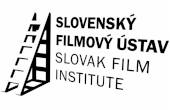I make it sound meaningful, but it’s actually meaningless, admits the female protagonist in Umut Evirgen’s second feature titled Meeting Point. Ironically, these words find a certain resonance in the film’s overexploited visual techniques and flawed sideplots, which may overshadow its world-building confidence.
Witnessing a quarrel between a cab driver and his customer, a man in his fifties and a girl in her twenties lock their eyes. They have little in common except for their struggle to find fulfillment within their respective worlds. He (Levent Üzümcü) is a white-collar worker, a principled achiever, and someone who may just have let his life slip away without having found his purpose. She (Melisa Şenolsun) is emancipated and confident, but dissatisfied with the bland reality around her. Without even exchanging their names, the two get on a motorcycle and venture into the nightly city.
Along with his cinematographer Veli Kuzlu, Evirgen dispenses with verisimilitude from the very beginning of the film. A recurring motion blur, a shallow depth of field, and a golden afterglow pull the audience into a world of numbed senses. The film’s intimate close-ups and freeze frames, too, refreshingly emphasize visual storytelling. These creative choices speak to the characters’ desire to cherish their lives, but also to the extent to which they are distanced from them. Every so often, however, the motion blur effect feels overused and consequently loses its identity as a relevant grace note, provoking apathy toward the on-screen events.
The film’s degree of success is ultimately dependent on the means it employs when narrating the interactions between its protagonists. The quiet moments between the two, drawing on the established visual poeticism, hit the nail on the head within the characterization departament; the duo’s respective bearings, costumes, and quirks speak volumes about their incompatibility. Their straightforward dialogues, though, never quite reach the skillful visual relationship-building - their glances, their chemistry. At the same time, the overall insignificance of these verbal exchanges develops the protagonists’ desensitization. There, the filmmaker proposes a provocative idea: in spite of their best efforts, language alone is incapable of bridging the gap between the protagonists - one imposed on them by their disparate backgrounds.
At its strongest when diving into the duo’s relationship, the film occasionally underdevelops elements on the outskirts of the main plot. The portrayals of a waitress at a drag club, the girl’s DJ boyfriend, and the man’s wife, all venture toward clichés. Üzümcü’s character’s implied masochism, too, finds an unsatisfying closure in a tattoo-making scene, which evokes disinterest in, rather than compassion toward, the character. These shortcomings, coupled with flat dialogues, weight on the otherwise compelling, yet not fully accomplished, directorial vision.
More often than not, writer-director Umut Evirgen proves himself a distinctive filmmaker, whose confidence lends his feature a unique identity. It’s the indulgence in distracting visual stunts and at times awkward character writing that prevent the film from taking advantage of its greatest asset, one where so many other filmmakers fail - crafting a world marked by an unmistakable atmosphere.




















